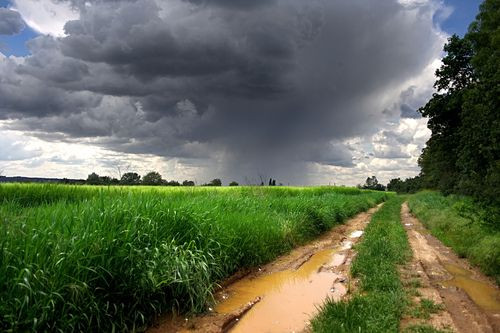Hurricane Katrina Doubled The Number Of Stillborn Babies In Some Parishes: How Disasters Affect Birth Rates

The impact of a natural disaster on the health of adults and children is often obvious, but do disasters also harm the health of fetuses? To answer this question, a scientific team examined the evidence left behind by Hurricanes Katrina and Rita. “The destruction caused by Hurricanes Katrina and Rita imposed significant measurable losses in terms of fetal death,” the authors concluded. In fact, the authors suggest the two hurricanes together may have directly caused up to half of all recorded stillbirths in the worst hit areas. Their work appears in the Journal of Epidemiology & Community Health.
Impact of Stress and Trauma on Expectant Mothers
Pregnant mothers who are exposed to the stress of a hurricane sometimes have complications during labor yet their difficulties are usually explained away by saying these mothers could not access proper healthcare before or after the disaster. Some researchers theorize that the trauma experienced by mothers during a disaster is what caused problems with their births. To many this makes perfect sense: Past studies have linked high stress during pregnancy to an increased risk of spontaneous abortion, preterm birth, low birth weight, and other complications. How does the high stress of a natural disaster affect expectant mothers?
On Aug. 29, 2005, Hurricane Katrina struck the state of Louisiana followed by Hurricane Rita, the fourth most intense hurricane ever recorded, one month later. Both hurricanes caused widespread damage to neighborhoods, infrastructure, and property, while leaving death, injury, and trauma in their wake. Data gathered from several government agencies show that the twin hurricanes caused devastation in 38 out of 64 parishes in the state, with almost 205,000 housing units affected. In four parishes, more than half of the local housing was damaged. In three others, between 10 and 50 percent of the housing was harmed. Elsewhere, the wreckage was either below 10 percent or less than one percent.
To explore the impact of the two hurricanes on fetal health, the team of researchers gathered the data and calculated the odds of a pregnancy resulting in a stillbirth in both the devastated and the undamaged parishes during the 20 month period before, and the 28 month period after, Katrina hit. At the same time, the team looked at all the birth data between 1999 and 2009 in Louisiana to gauge usual patterns and serve as a comparison. Next, they created space-time models to assess whether the extent of destruction was linked to the risk of stillbirths in any given area.
What did they discover?
The risk of a pregnancy ending in a stillbirth was 40 percent higher in parishes where 10 to 50 percent of housing had been damaged, and more than twice as high in areas where over half of the housing had taken a hit. In fact, every single percent of increase in the extent of destruction to housing was linked to a corresponding seven percent rise in the number of stillbirths.
Worse, of the 410 stillbirths officially recorded in the extensively damaged parishes, up to half may have been directly caused by the twin disasters. However, the risk of stillbirth may have been even higher, the researchers suggest, due to the fact that their calculations could not account for the exodus of residents from the coastal parishes of Louisiana. A comparison to previous years when no disasters occurrec support such claims. In the year of Katrina, for instance, the total number of live births in the hardest hit areas was more than 40 percent lower than in 2004, when no disaster struck. And in parishes with more than half of the housing destroyed or damaged, the live birth rate fell by 79 percent in the three months following Katrina compared to the same period in 2004.
With climate scientists predicting an increase in the frequency, intensity, and duration of North Atlantic tropical cyclones, the scientific team warns of potential dangers. “The health risks to the unborn and their perinatal development will likely increase with more frequent and intense hurricanes,” they wrote in their conclusion.
Source: Zahran S, Breunig IM, Link BG, Snodgrass JG, Weiler S, Mielke HW. Maternal exposure to hurricane destruction and fetal mortality. Journal of Epidemiology & Community Health. 2014.



























